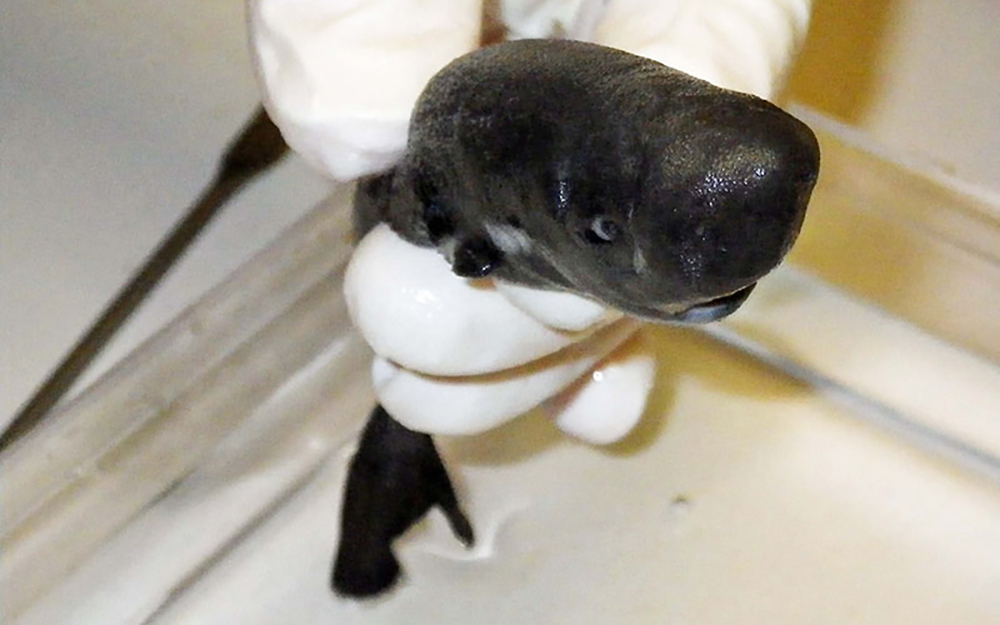Adorable Shark Fits in Your Hand, Looks Like a Mini Sperm Whale

Tiny, blunt-headed sharks called pocket sharks are so rare that until just a few years ago, only one individual had ever been collected from the southeastern Pacific Ocean. And now, that lonely shark finally has company.
Researchers with the National Oceanic and Atmospheric Administration (NOAA) caught a second pocket shark in 2010 in the Gulf of Mexico. Scientists declared it to be a pocket shark in 2015, and after further analysis it was recently described as a new species.
Measuring only 5.5 inches (14 centimeters) in length, the wee male shark was identified as an American pocket shark and given the scientific name Mollisquama mississippiensis, according to a new study. [In Photos: Glow-in-the-Dark Sharks]
You might think that adorable pocket sharks are so named because they're small enough to fit comfortably in a pocket. However, the name comes not from their petite size but from a physical feature: a pocket-like orifice found near their pectoral fins.
Pocket sharks also have tapered bodies and endearingly wide, blunt heads "with a broadly rounded bulbous snout," the researchers reported. From certain angles, this makes the sharks look like very, very tiny sperm whales, according to the Live Science newsroom.
The only other pocket shark specimen in the world — a female — was caught in 1979 and is part of the collection at the Zoological Museum in St. Petersburg, Russia. But this new specimen has features that distinguish it from the female pocket shark. It has different teeth, 10 fewer vertebrae, a pit organ on its jaw and light-producing organs distributed on its stomach and back, the scientists wrote.
The unexpected discovery of this exceptionally rare animal hints that there is much to be learned, not only about these mysterious fish, but about the deep waters of the pocket sharks' habitat, said study co-author Henry Bart, director of the Tulane University Biodiversity Research Institute in Louisiana.
Get the world’s most fascinating discoveries delivered straight to your inbox.
"The fact that only one pocket shark has ever been reported from the Gulf of Mexico, and that it is a new species, underscores how little we know about the Gulf — especially its deeper waters — and how many additional new species from these waters await discovery," Bart said in a statement.
The findings were published online June 18 in the journal Zootaxa.
- 8 Weird Facts About Sharks
- In Photos: Great White Sharks Attack
- Image Gallery: Mysterious Lives of Whale Sharks
Originally published on Live Science.

Mindy Weisberger is a science journalist and author of "Rise of the Zombie Bugs: The Surprising Science of Parasitic Mind-Control" (Hopkins Press). She formerly edited for Scholastic and was a channel editor and senior writer for Live Science. She has reported on general science, covering climate change, paleontology, biology and space. Mindy studied film at Columbia University; prior to LS, she produced, wrote and directed media for the American Museum of Natural History in NYC. Her videos about dinosaurs, astrophysics, biodiversity and evolution appear in museums and science centers worldwide, earning awards such as the CINE Golden Eagle and the Communicator Award of Excellence. Her writing has also appeared in Scientific American, The Washington Post, How It Works Magazine and CNN.


